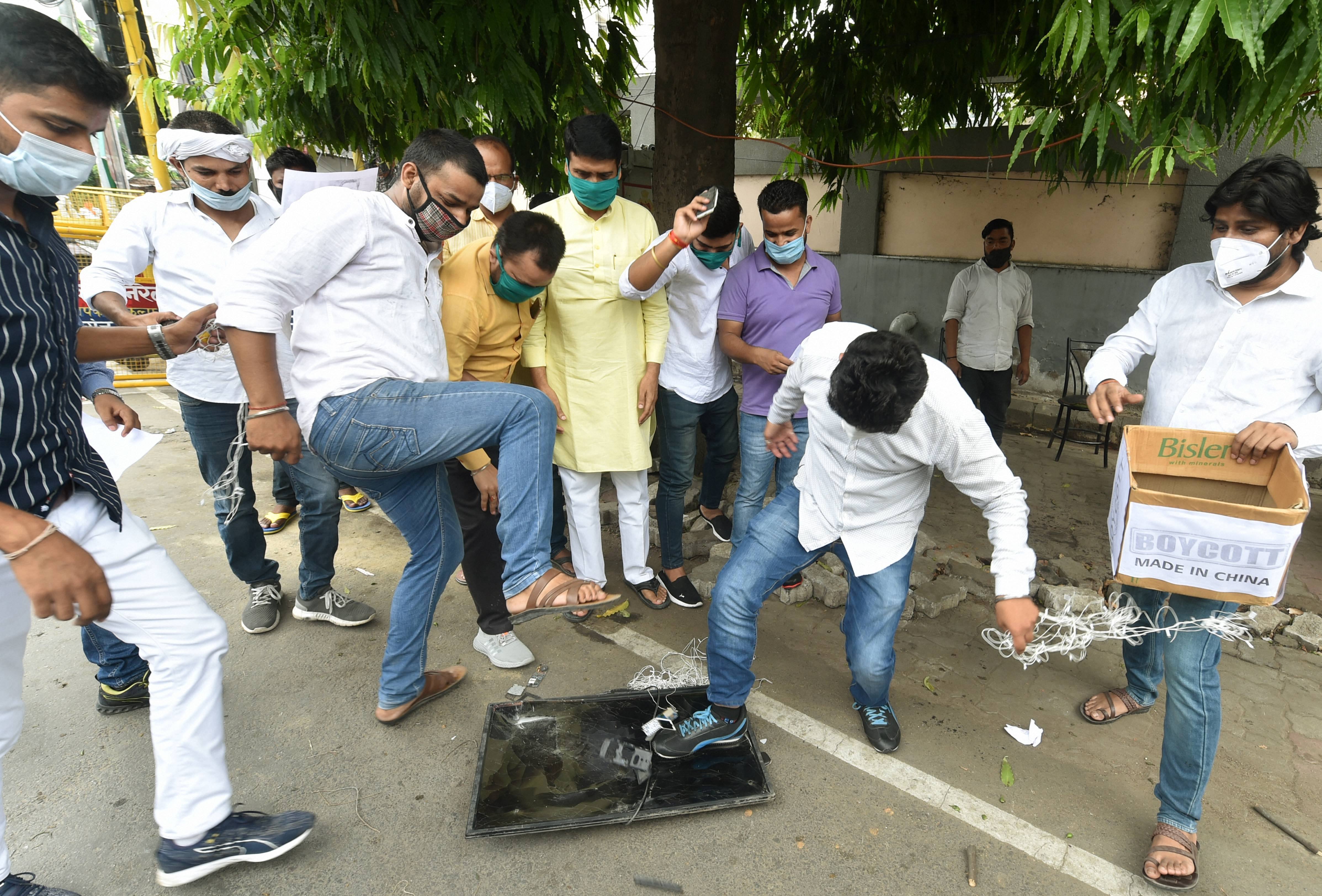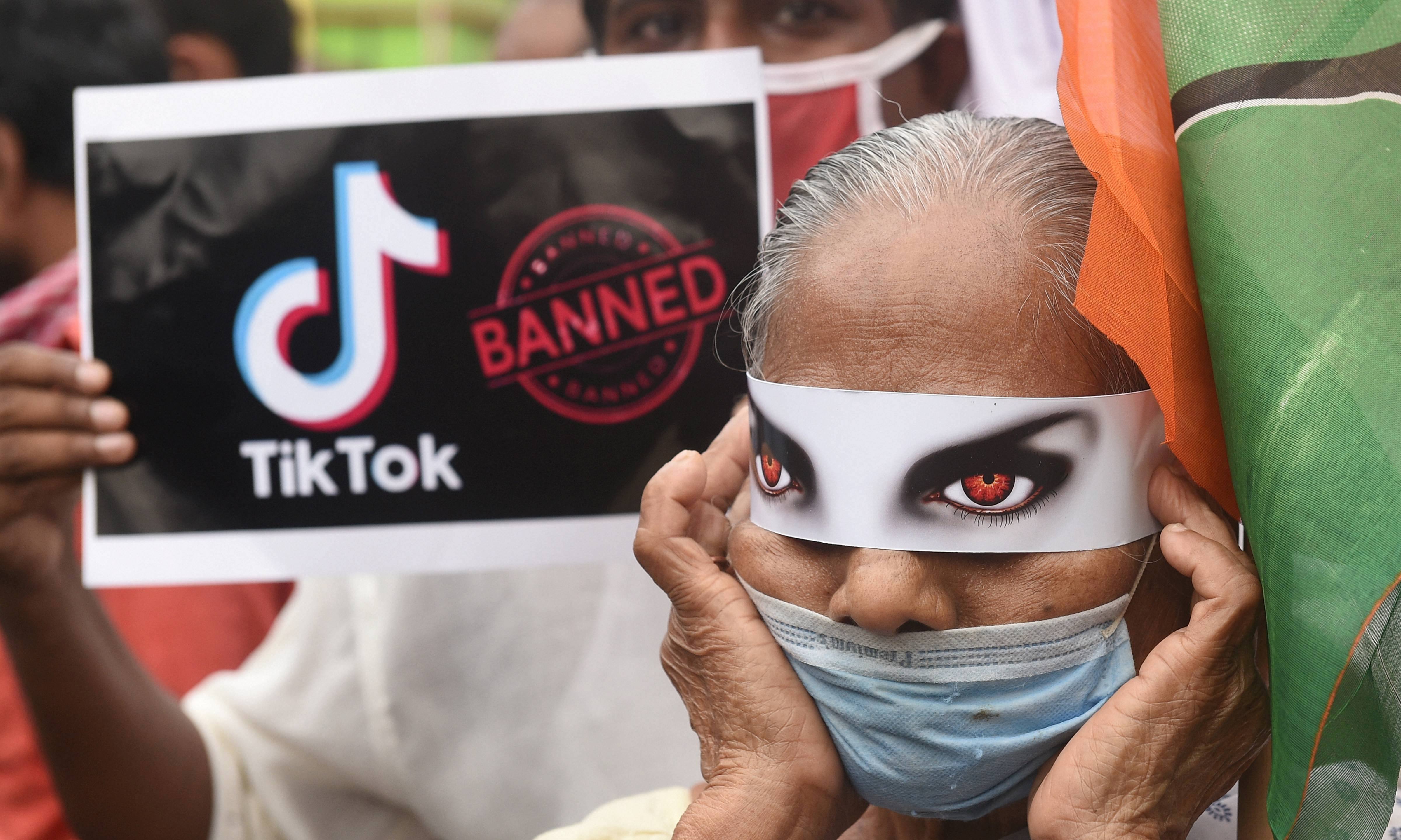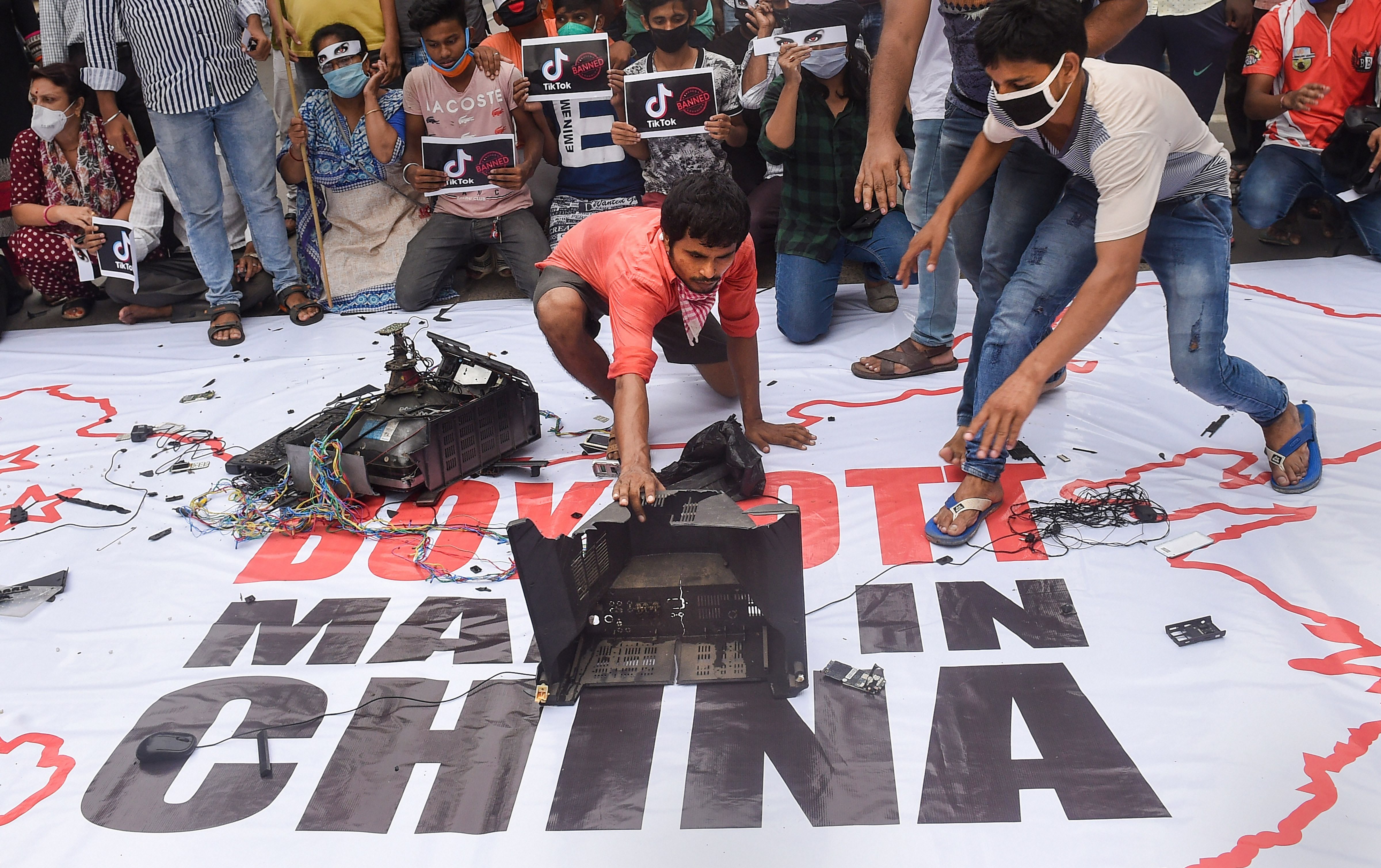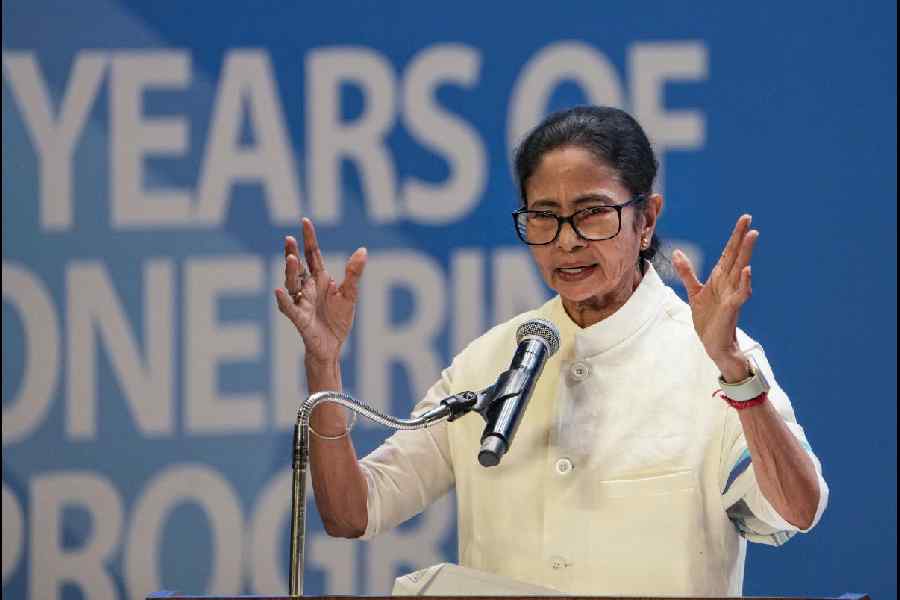My OnePlus 3 is on its last legs and after China's deadly intrusion in Ladakh, I don't want a new Chinese phone so I'm going to switch to an Iphone. But hang on. Now, it gets complicated. Foxconn, the company which makes over half the world’s iPhones, produces a large chunk of them at its plant in Shenzhen.
I’m not the only one facing a dilemma if I want to dump my Chinese mobile phone. The Chinese now control some 76 per cent of the Indian smartphone market. Indian brands like Lava and Micromax have been decimated and even erstwhile market leader Samsung has taken a beating in the face of the Chinese onslaught.
From phones to pharmaceuticals, auto components and even tyres, it’s the same story – it's tough to compete against the Chinese. And forget competition for a moment. Even the vibrant Indian start-ups which hope to become world-beaters are fuelled by Chinese megabuck giants like Tencent and Alibaba. The Chinese have put sizable funds into 18 out of 26 India’s unicorns which have achieved valuations of more than a billion dollars.
Just look at bilateral trade numbers to realise how difficult it would be for India to decouple commercially from China, which is our largest trading partner. India’s trade deficit with China in the last fiscal year was some $49 billion, meaning we buy vastly more from our neighbour than we sell to it. India imports 14 per cent of goods and services from China compared to the 5.3 per cent we export to the country.
In fact, the head of a leading electronics firm just laughs when asked how Indians can boycott Chinese products. “It’s not practical,” the executive who for obvious reasons doesn't want to be identified, says bluntly, adding: “In the electronics supply chain there's always some link to China.”
Take a look at Samsung, for instance, which has moved its mobile phone production out of China in recent years but still gets batteries and other components from the Middle Kingdom.
Why is it so tough to compete against the Chinese? The answer is sheer scale which dramatically slashes costs. The Chinese build on a gigantic scale and then find a market for their products. China made around 23 million automobiles in 2019. That’s compared to our three million before the slowdown.

Congress MLC Deepak Singh (C) along with party supporters during a protest against the killing of 20 Indian Army soldiers in Ladakhs Galwan Valley by the Chinese Peoples Liberation Army (PLA) troops, in Lucknow, Thursday, June 18, 2020. PTI
Tyres: 10 million vs 25 million
One industry which has held its own on the road against the Chinese is the automobile tyre industry. But it's worth a close look for an understanding of what we are up against. India makes about 10 million radial truck tyres a year. In China, the average company makes around 25 million and there are scores or even hundreds of tyre companies compared to our around 20.
“As a rule of thumb, they look at 70 per cent exports. We wouldn't look at more than 20 per cent exports. Anything more than that would be considered too risky,” says Rajiv Budhiraja, who's director general of the Automotive Tyres Manufacturers Association.
Budhiraja adds Chinese companies get innumerable state concessions which make their quest for massive economies of scale much easier than for any Indian company. Land comes at a concessional rate and along with that are a host of tax breaks and a leniency when it comes to paying back loans. Says Budhiraja: “What I’ve understood is they want to keep their manpower busy.”
Medicines: China dependent
This is the same game the Chinese played in pharmaceuticals. Around 1990, India made a very large proportion of its own active pharmaceutical ingredients, otherwise known as APIs, which are the raw ingredients of medicines. Companies such as Indian Drugs and Pharmaceuticals (IDPL) helped to lay the foundation of a vibrant domestic API pharmaceutical industry.
But in the 1990s, the Chinese decided to scale up massively to build up their own pharmaceutical industry and wiped out most rivals who were steadily undercut by lower Chinese prices. India now gets 80 per cent of its APIs from China. “Slowly, they created large plants and the cost of manufacturing was so economical that our plants started closing down and they became the dominant power,” says Sudarshan Jain, director-general, Indian Pharmaceutical Association (IPA).
How big is that dependence? According to a report by consultancy KPMG, in the antibiotics segment, India relies on China for 98.5 per cent of its penicillin and 99 per cent of ciprofloxacin. Dependence is similar for such drugs as heart drug digoxin, drug-pressure medicine losartan and diabetes medication.
The sector’s overwhelming dependence on Chinese drug ingredients makes any Boycott China move extremely tough to pull off. But that also makes it all the more urgent that we are no longer reliant on China as the main source of our drug raw materials. Even before the latest clash with the Chinese, the government had been devising a slew of policies to change this picture. Last month, it announced a nearly Rs 100-billion fund to spur companies to make pharmaceutical ingredients at home rather than import them from China. The new policy will include incentives and also the setting up of industry clusters that might bring down costs.
Says Jain: “You must have a diversified supply. That was lost in the whole game. If we start building up our industry now, it will take two-three years to become less dependent on China.”
A lot will depend on government follow-through. The Indian government declared 2015 the “Year of Active Pharmaceutical Ingredients” as part of a drive to bring about self-sufficiency” in manufacturing drug raw materials. Then, in early 2016, the government set a deadline of 2020 to end the heavy dependence on China for key drug molecules.

Youth Congress activists during a protest against the killing of 20 Indian Army soldiers in Ladakhs Galwan Valley by the Chinese Peoples Liberation Army (PLA) troops, in Kolkata, Thursday, June 18, 2020. PTI
Startups: Where’s the money?
Turn in a completely different direction. India has a booming startup sector that’s reckoned to be third in the world behind the US and China. But flush-with-funds Chinese giants like Tencent and Alibaba provide the financial power for many of these. Alibaba is, for instance, a key backer of Paytm. Other high-profile startups like Zomato, Udaan and Ola have also received substantial funds from Chinese backers. A recent Brookings India report said the total amount of current and planned Chinese investment in India has crossed $26 billion or nearly Rs 200,000 crore.
Where is the money going to come from if not China? K. Ganesh, who is known as the superstar start-up king, and is the moving force behind companies like Big Basket, Portea and several other startups, suggests there’s no real harm in taking money from the Chinese. He points out the funds are going to create Indian companies and jobs here. He adds big-league venture capital is simply not forthcoming from India’s richest players.
MSMEs hit hard
Look at a totally different sector. The country’s all-important medium and small-scale businesses have taken a beating in the wake of the Covid-19 shutdown. They rely heavily on inputs from China and warn input costs could rise by up to 40 per cent if they’re forced to stay clear of the Chinese market.
So what’s the way out? We can’t go back to business as usual. “This is a turning point. A very serious junction in the relationship,” former foreign secretary Nirupama Rao told London’s Financial Times.
One move has already been made. The government’s ordered state-owned telecom company BSNL that it must find alternatives outside China for its telecom upgrade. Unfortunately, that would leave BSNL, which is already saddled with a high-cost structure, at a disadvantage against its private sector rivals. Last month, the government said it would screen all foreign direct investment from countries with which it shares a land border -- a move clearly targeting China - in a bid to ward off takeovers when asset prices are depressed due to the Covid-19 pandemic.
And there are other areas where the government can ensure China gets the thumbs down for major contracts. Huawei, for instance, is very keen to land the contract to set up India’s 5G network. This is almost certainly not going to happen.
India’s only around 30 in the list of countries that China does business with. But for one reason or another, aside from the US, almost everyone else is nursing a grudge against Asia’s giant too. The European Commission just issued a report which concluded foreign actors and countries, in particular Russia and China, carried out targeted disinformation campaigns seeking to undermine democratic debate, exacerbate social polarisation, and improve their own image in a Covid-19 context.
But ultimately, India boycotting Chinese goods will hurt this country way more than it affects China, forcing our companies to seek out more expensive suppliers at a time when the economy’s already shrinking rapidly. Most of India’s supply chain originates in China and that can’t be rapidly changed.
China obviously isn’t about to win any global popularity contests right now and it’s been looking at decoupling its economy from the US and Europe in favour of Asia – and that includes India – for investment in coming years. After the deaths of 20 Indian soldiers. it would need very strong conciliatory moves if China-India relations are to return to anything like business as usual. But a full-scale boycott of Chinese goods just isn’t on the cards










